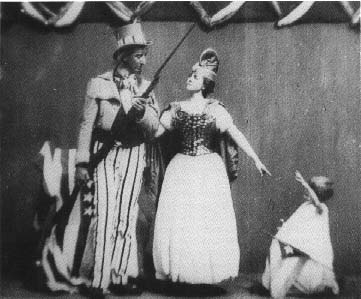 |
| Edward Amet's Freedom of Cuba (1898). |
|
Amet's allegory presents the figure of the woman (apparently a hybrid of Lady Liberty and Columbia) in a passive role as a surrogate supporter urging Uncle Sam to act or intervene on the "Cuban issue." By endowing Uncle Sam with an overdetermined military phallus, his bayonet unwittingly signifies the violent penetration of the U.S. into Cuba and the concomitant annexation of new territories (i.e., Guam, Puerto Rico, the Philippines, and Hawaii). The film can also be viewed as symbolizing the birth of an older New World Order (and family of nations) as Uncle Sam adopts a helpless "baby Cuba" incapable of self-rule dropping the Cuban flag to embrace American ideals. A different version of this imperial fantasy appears in the tableau photograph by Captain Fritz Guerin showing "little Cuba" (this time represented by a young white girl) displaying the broken chains of Spanish oppression. |
© 1996–2009, Roy Rosenzweig Center for History and New Media. (Copyright Notice)